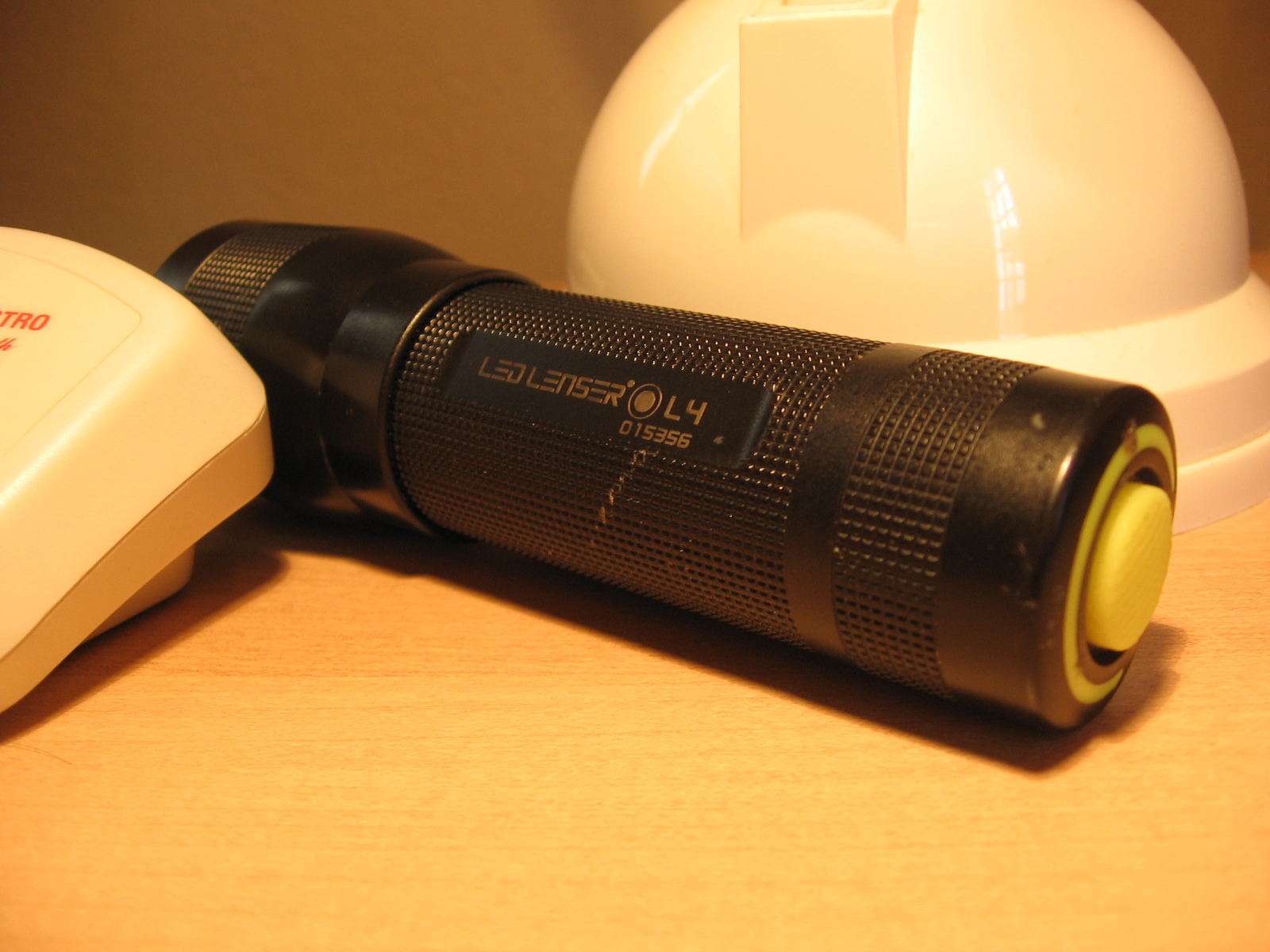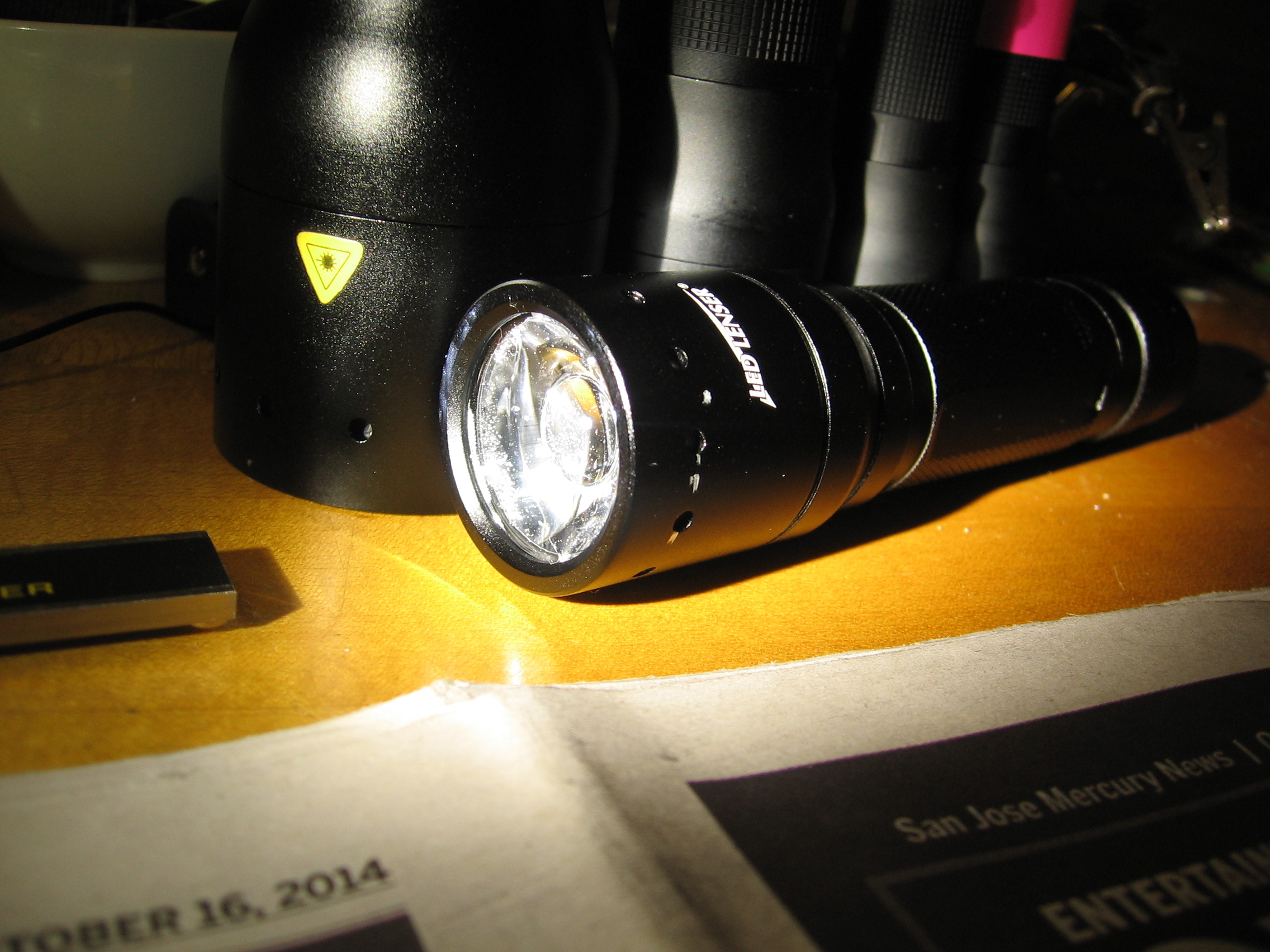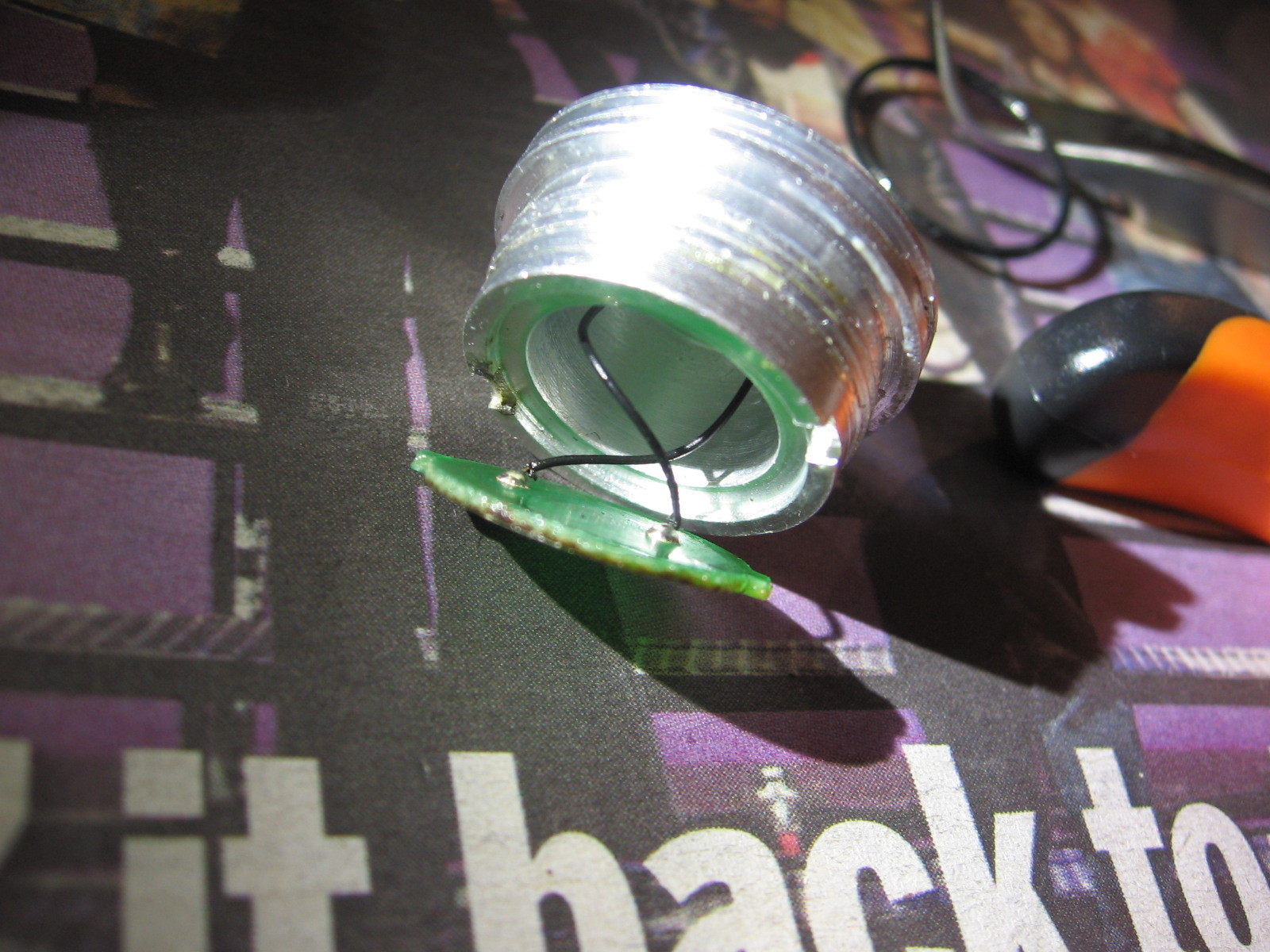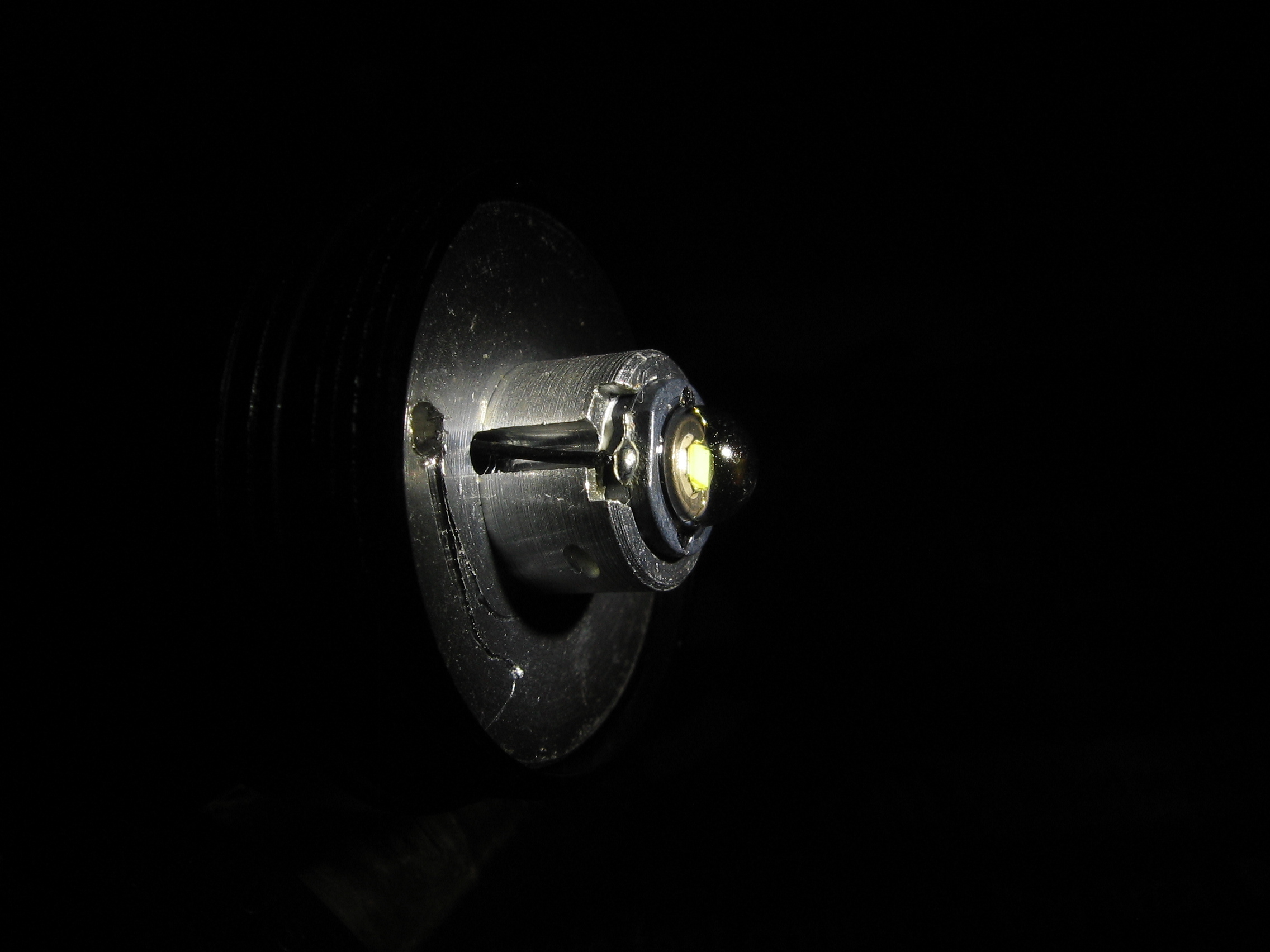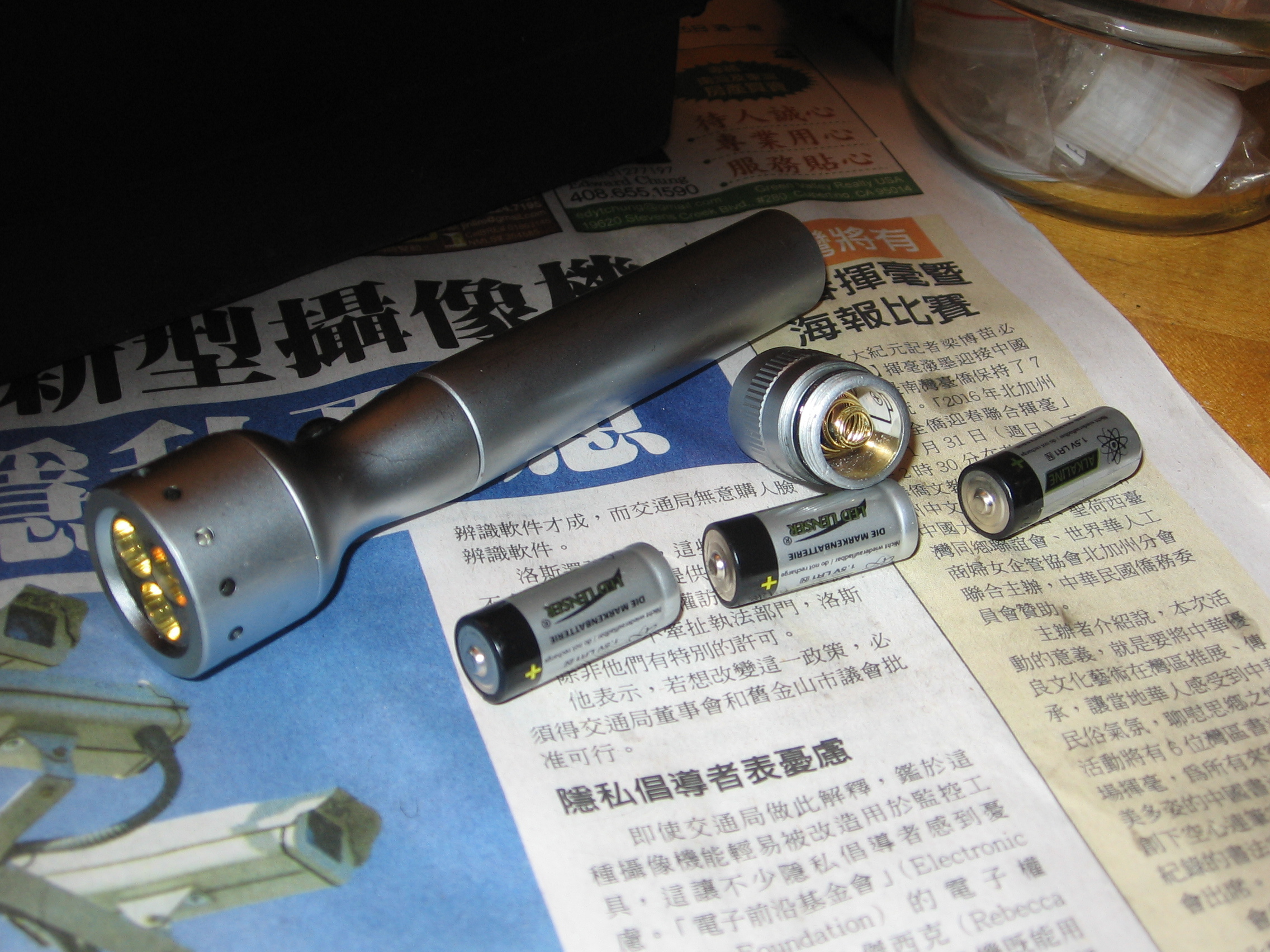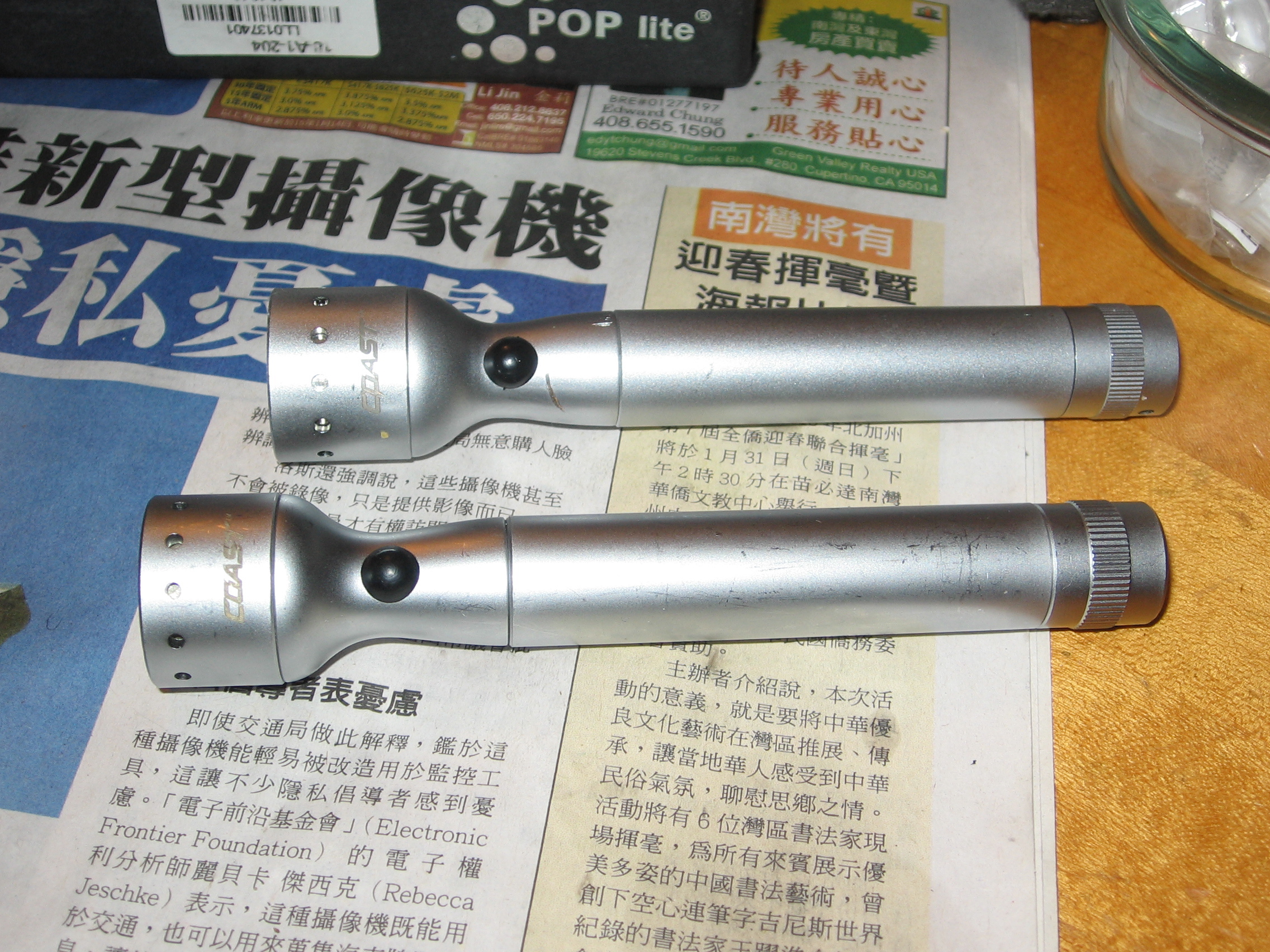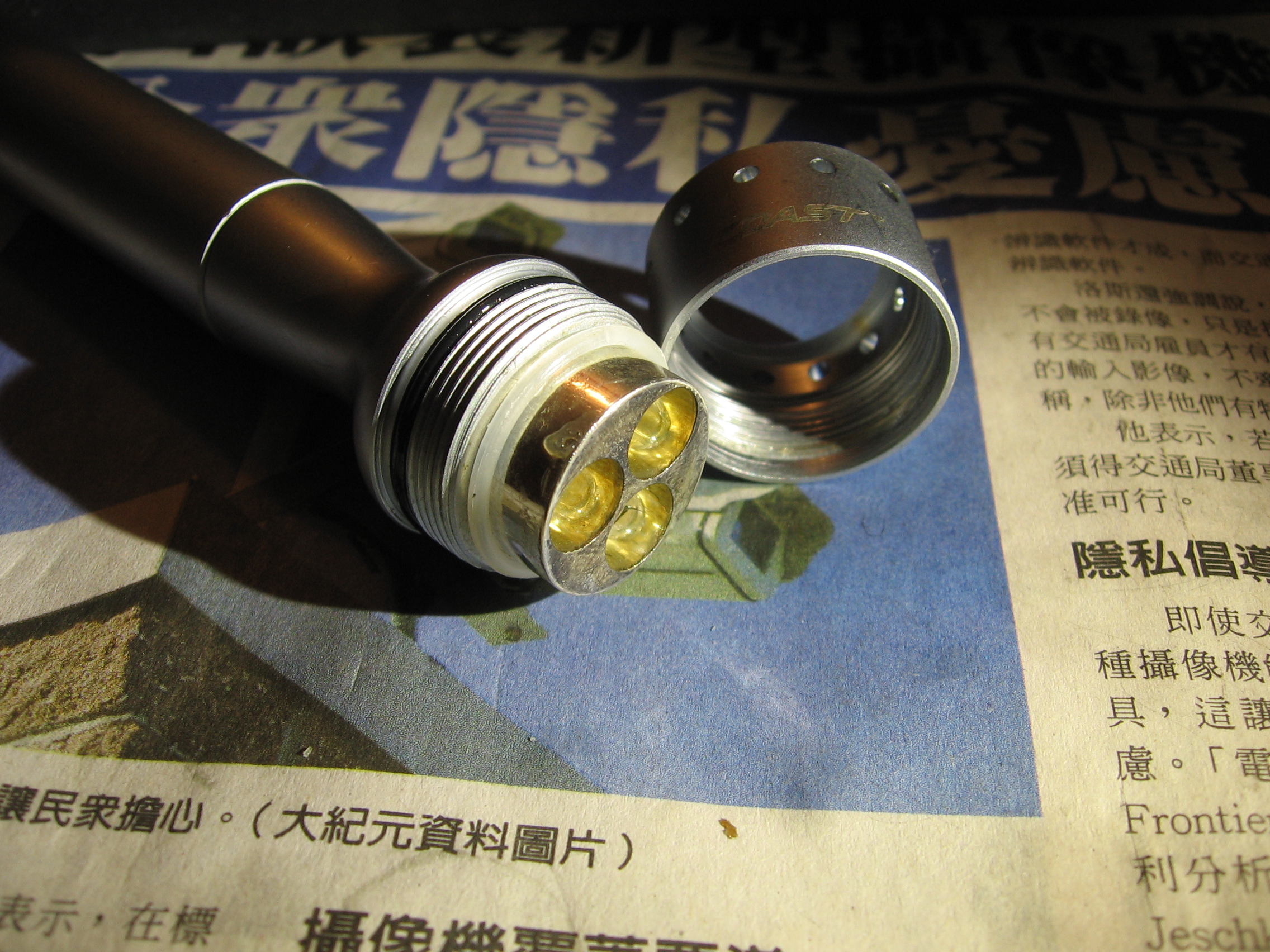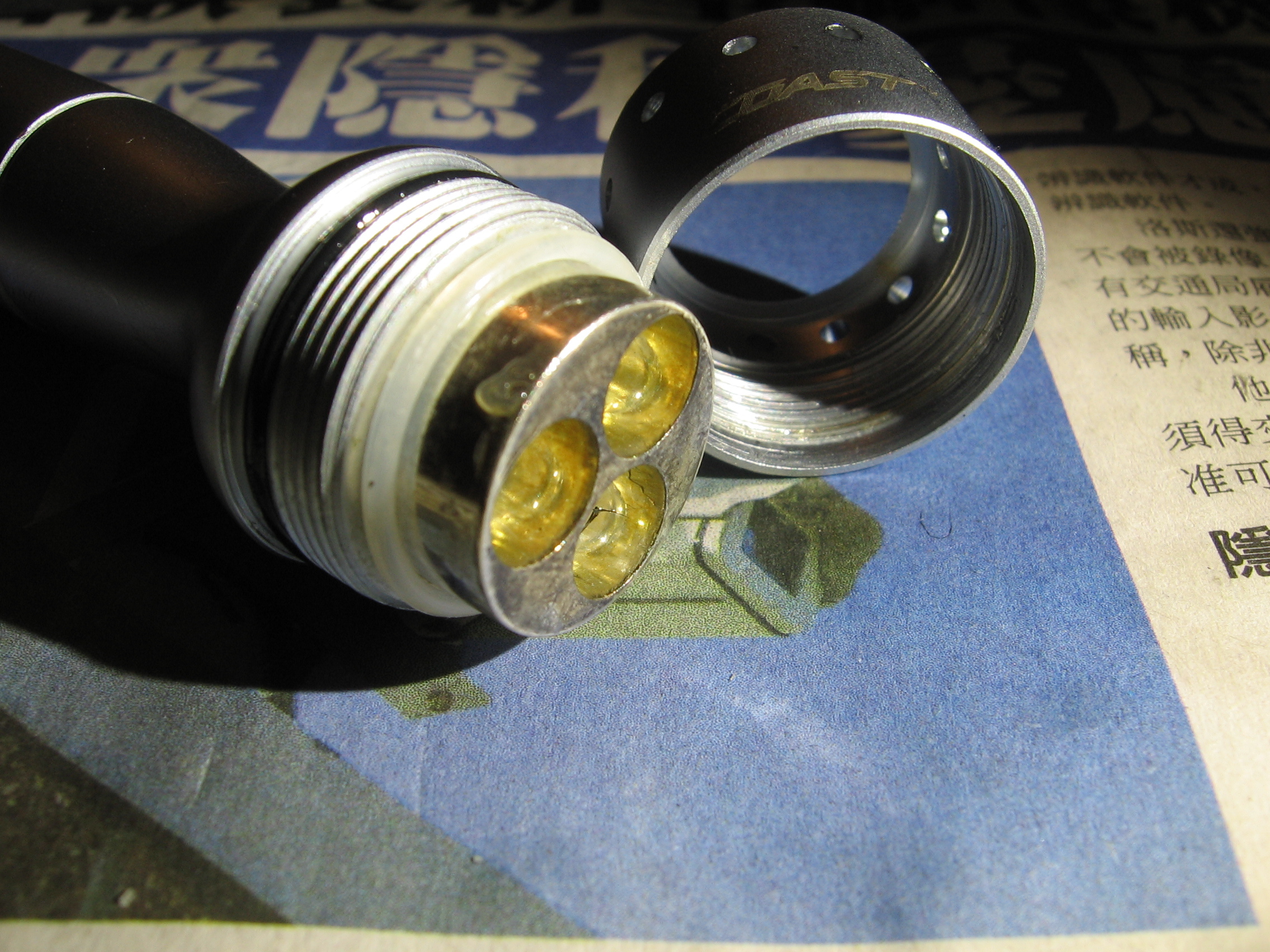Coast / LED Lenser LL7549 V2 Moon Lenser
2016.4.22
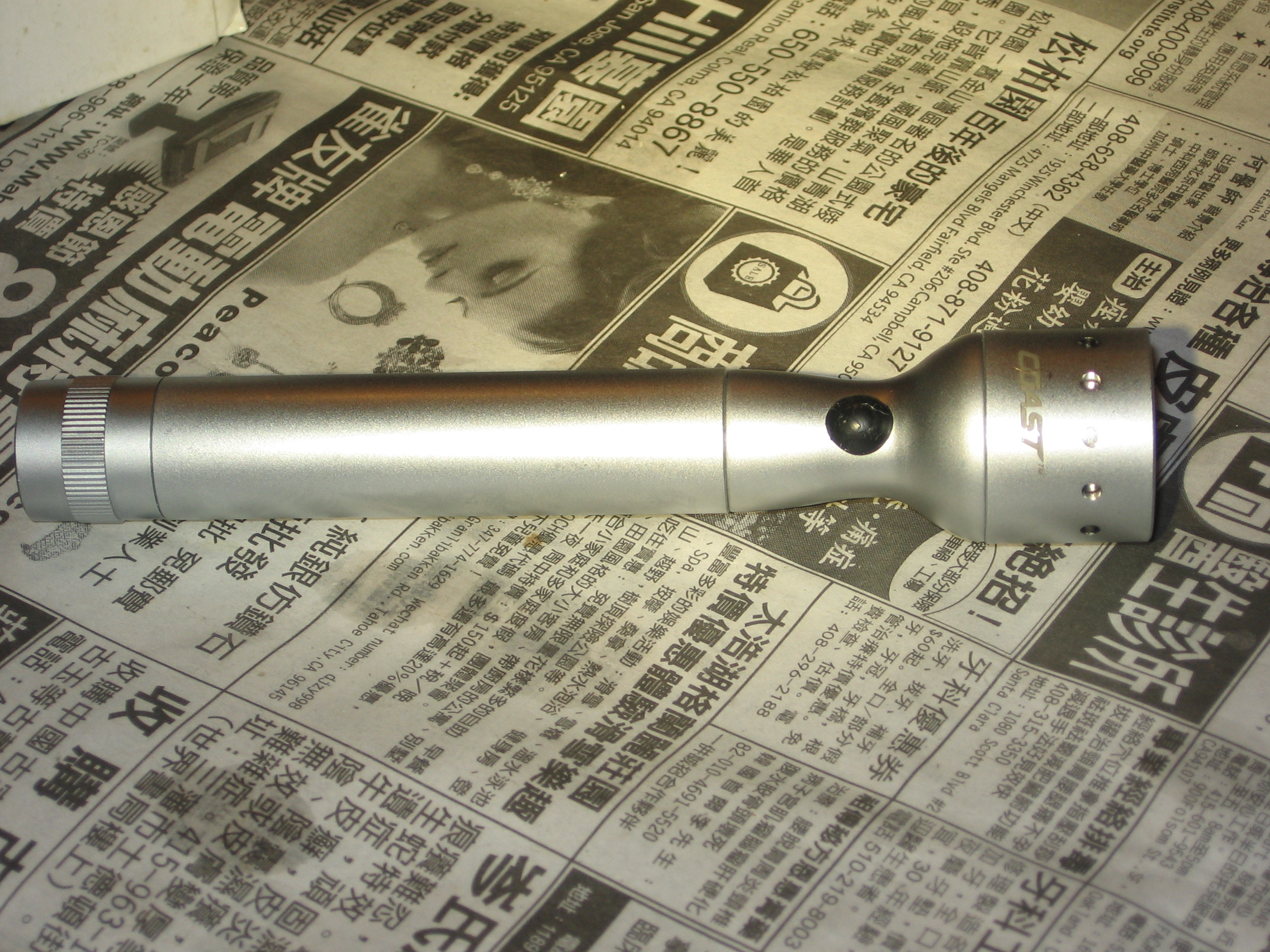
I received this old light yesterday from Amazon. It seems to have been the only one they had, but it is also available here:

It says “136 available / 68 sold ”.
It has the same shape as the beautiful but expensive and rare stainless steel POP lite P73 and similar models such as P75 and P673. It must have been a very nice light when new, but it is now quite obsolete. It has only a single 5 mm. LED, on a fiber glass circuit board in the narrow neck by the switch.
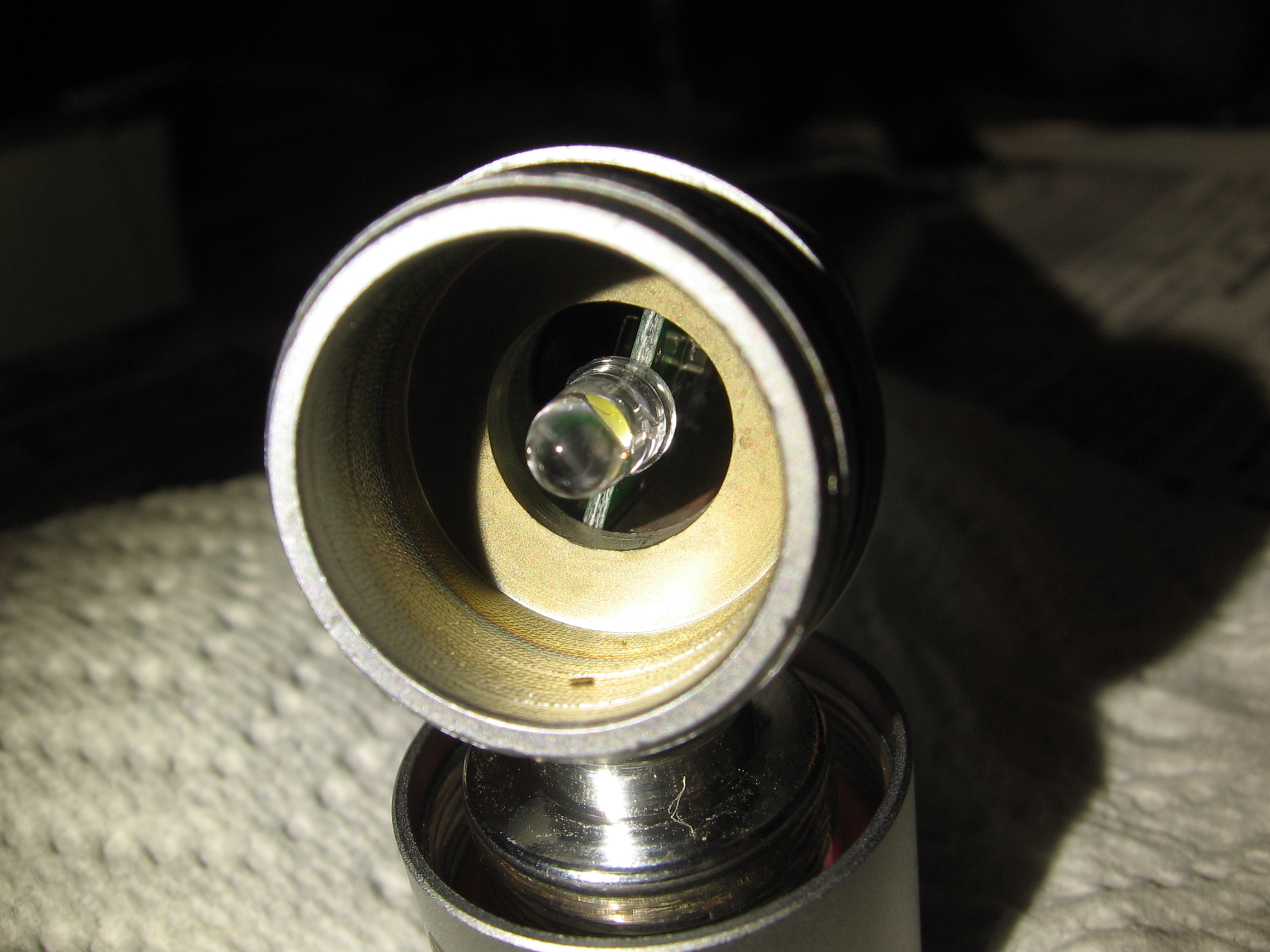
The switch and boost driver are on the same bIoard.
The LED has its own lens and throws a fairly small spot without the head on. The head contains a fixed symmetrically double convex lens that forms a small spot about 3 cm. in front of the light and a uniform “moon” spot with a blue edge at distance.


Strangely, there is a ring of holes around the head. These are between two o-rings and don’t appear to spoil the water resistance. The clear o-ring seals (or is supposed to seal) between the lens, the head and the plastic dummy reflector spacer. The pink one seals between the dummy and the head. A black o-ring seals between the head and center section, and there is an o-ring in the tail cap.
A faint sparkle escapes from the holes. It is white, rather than red, so it must come back from the lens rather than forward around the dummy reflector spacer. Since the spacer has no main optical function, one could remove some or all of it coating to let more light out the holes. This would also change the rings in some way.
The switch is the intermittent type, not in the main current path. There is only one mode, which makes good sense since even lower modes would be of little use. I measure 0.2 A at the tail which must give around 10 hours run time, depending on how the current varies with battery voltage. Brightness is like low modes on other small lights.
A light that puts less then a tenth of an amp. through the LED is not useful unless I can get it apart. Penetrating oil, acetone and strips of rubber wound around and even moderate heating didn’t do it. Two pairs of pliers did it, but with scratches, and the rubber switch boot was destroyed. (There was a spare switch boot under the gold plated tail spring.) I should have worked the boot out its hole before taking the waist off the tube. I don’t think the driver can come in or out with the boot on it. There was a locking compound in the threads, harder than that I have found in POP lite threads. Maybe more heat might have saved the scratches.


There is a groove for a thick o-ring but no o-ring. Maybe the thread locking compound sealed it.
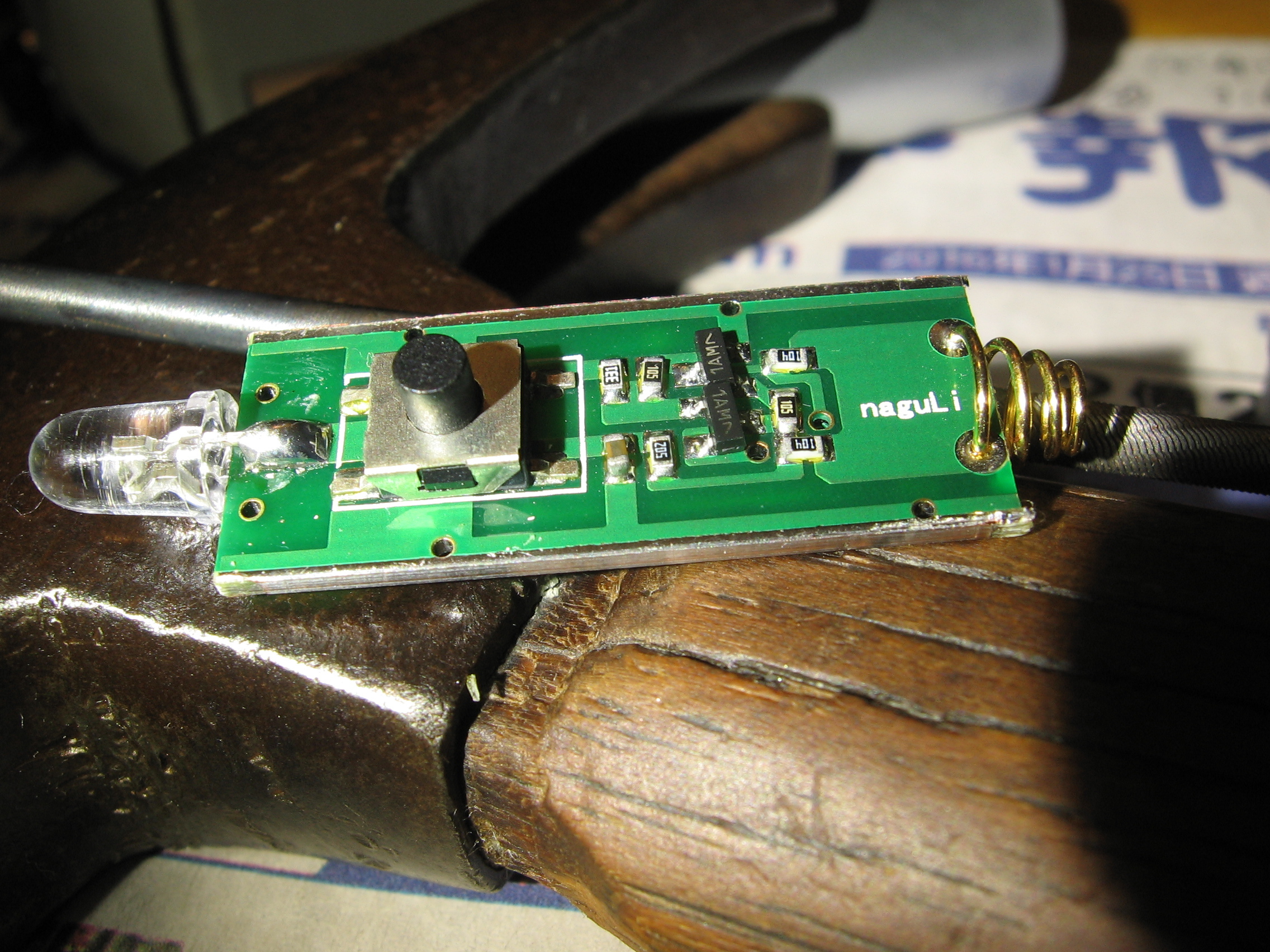

The driver board has 15 components on it plus the switch, spring and LED. One who knew how it worked might be able to re-tune it for a power LED. It is 13 x 32 mm. and sits in slots (as the P5.2 driver does) in the 12.4 mm. I.D. waist or isthmus.
The battery tube is reversible, as though it was actually designed by an engineer, rather than just giving verbal instructions to a machinist. Where it is scratched or not anodized, it looks like brass! No wonder it is so heavy. Machining marks do not show, so I don’t know how it was fabricated. (A bad thing according to modern art principles.) It probably was NC machined, as machining ease is brass’s best property.
The build is very good, except that there are steps in diameter at the joints. Its great advantage is the subtly curved center section by the switch. This is what makes it easy to hold and to switch and makes it beautiful to see and to feel.
More old Lensers are available in Germany, but the shipping from there to here is expensive.
Modification Potential
Like the Smiling Shark SS-5039, it needs radical modification to realize the benefits of its excellent shape. Obstacles include the narrow neck and limited length of the head, unusual diameters and electronic intermittent switching.
One 5 mm. LED limits it to low mode only. With a newer 5 mm., it might have a good run time / brightness combination but still would lack a high mode. A power LED would require metal cooling, which could be accomplished by placing a thick copper 20 mm. star against the front of the center section.
This would put the LED in about the same place it is now, which would give some sort of useful focus with the original lens. For good focus, it would need new optics also, which could be anything not zooming that fits in the space, which is about 20 x 20 mm. More precisely, it is 19 mm. diameter at the rear for a bit less than 10 mm. and 23 mm. diameter in the front part. Perhaps the lens could be replaced with a 23 mm. flat window and a reflector of about the right size fit in with spacers. Big lens SK-68 clones have lenses of about 22 mm. that fit fairly well.
This leaves the question of where to put a more powerful driver. For AA, this might fit in the neck along with the switch:  , or one might fit both a driver and a star behind the optics, as in a normal light. If the star were filed for a good fit, it wouldn’t need a pill. For 14500, a 20 mm. driver could be filed down to 19 mm., or a one sided 17 mm. driver could be in thermal contact with the center section. This would leave more space for the optics and for the switch. To work properly, it needs an intermittent electronic driver. These are available in kit and assembled form from Mountain Electronics.
, or one might fit both a driver and a star behind the optics, as in a normal light. If the star were filed for a good fit, it wouldn’t need a pill. For 14500, a 20 mm. driver could be filed down to 19 mm., or a one sided 17 mm. driver could be in thermal contact with the center section. This would leave more space for the optics and for the switch. To work properly, it needs an intermittent electronic driver. These are available in kit and assembled form from Mountain Electronics.
It looks as though a one sided driver and a star will fit behind a TIR optic. If it is too short for that, a triple will fit if there is one the right diameter.
After getting it apart: The driver could be cut down to hold only the switch and leave room for a BLF Tiny 12 or the boost driver shown above.



